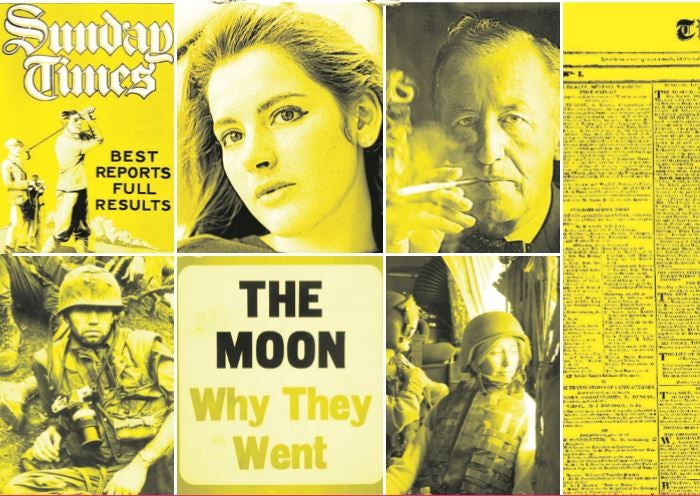
Not quite yet 200, The Sunday Times yesterday celebrated 10,000 editions with a four-page supplement providing a snapshot of its remarkable history.
It was the first British newspaper to launch a separate review section, the first to launch a standalone magazine supplement and the first to launch a dedicated business section.
Key landmarks:
- 1822 – Launched after the Independent Observer changed its name
- 1838 – Full-page woodcut illustration of Queen Victoria being crowned
- 1893 – Rachel Beer becomes paper’s first female editor (after it is bought by her husband Frederick)
- 1940 – News appears on the front page for the first time.
- 1968-79 – Thalidomide campaign
- 1981 – Bought by Rupert Murdoch,along with The Times.
Here are some highlights from yesterday’s supplement:
Hunter Davies writing about life at the paper when he joined in 1961:
The walls were wood-panelled and everyone except humble reporters had an office and a secretary.”
Long-serviing foreign correspondent Jon Swain, whose work in Cambodia inspired the film The Killing Fields:
On the horrific day the Khmer Rouge captured Phnom Penh in April 1975 and drove its 2m inhabitants into the countryside at gunpoint, I was taken prisoner and was due to be shot, my body tossed into the Mekong. Miraculously, I survived.
Others at The Sunday Times were not so fortunate.[Nick} Tomalin was killed by a Syrian missile during the Yom Kippur War. David Holden, another brilliant foreign correspondent, was shot in a taxi from Cairo airport — his death remains a mystery. David Blundy, whose charm and good looks always caused a stir among the ladies, was killed by a sniper in San Salvador.
Most recently the brave Marie Colvin was killed by the Syrian army. Her vivid human reporting from Sri Lanka, where she lost an eye; Chechnya, where she escaped over the mountains to evade the Russian army; and from across the war-ravaged Middle East made her a legend in the trade and one of the great war correspondents of her generation.
Insight editor Jonathan Calvert on the paper’s investigations section (a feature since 1963):
The first team exposed the London property owner Peter Rachman, whose name was to go down in history as a byword for a landlord ruthlessly exploiting tenants.
In the pre-computer era, the Insight team expanded to a peak of 17 journalists, who sought the truth the old-fashioned way, by pounding the streets for evidence. Their groundbreaking work forensically dismantling the official version of the 1972 Bloody Sunday massacre by British troops in Londonderry was based on interviews with more than 250 witnesses, carried out in just a few weeks. The Insight account became the blueprint for the reinvestigation of Bloody Sunday by Lord Saville, whose findings led in 2010 to an apology by the British government to the families of the dead.
The Insight team of the 1970s produced many memorable stories including, famously, its campaign on behalf of victims of the thalidomide drug. This investigation is still taught in journalism colleges today as an object lesson in how the power of the press can be harnessed to fight injustice.
In 1986, the Insight journalist Peter Hounam produced perhaps one of the most jaw-dropping exclusives yet. The story, headlined “Revealed: The secrets of Israel’s nuclear arsenal”, disclosed photos and detailed diagrams of the country’s previously unknown weapons programme revealed by one its former technicians, Mordechai Vanunu.
Email pged@pressgazette.co.uk to point out mistakes, provide story tips or send in a letter for publication on our "Letters Page" blog
